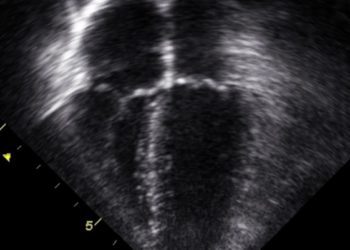Steroids and opioids often inappropriately prescribed in the emergency department for pediatric pneumonia and sinusitis
1. In a study of children with pneumonia or sinusitis, opioids and corticosteroids were inappropriately prescribed more frequently in the emergency department (ED) for both conditions compared to the ambulatory setting.
2. Overall, 1 in 16 children with pneumonia and 1 in 13 children with sinusitis were prescribed an opioid in the ED. Prescriptions for opioids increased with each advancing year of age in children with pneumonia.
Evidence Rating Level: 3 (Average)
Study Rundown: Opioids and systemic corticosteroids are not recommended for the treatment of children with pneumonia or sinusitis according to clinical practice guidelines established by several organizations. Both of these medications have significant side effect profiles and their efficacy has not been established in treating sinusitis or pneumonia in pediatric patients. In this study, researchers analyzed data from over 30 000 children in South Carolina and compared the frequency of opioid and systemic corticosteroid prescriptions for children with sinusitis or pneumonia based on patient care setting. Both opioid and systemic steroids were more frequently prescribed for patients in the ED compared to the ambulatory setting. The study also found that white patients were more likely to receive either medication for sinusitis compared to patients of other races. Each year of advancing age was associated with increased likelihood of opioid prescription for pneumonia. Given the lack of evidence for the use of these medications for pediatric pneumonia and sinusitis, prescribing patterns in the ED appeared to be excessive. These findings support efforts focused on ensuring proper prescribing practices.
Click to read the study in Pediatrics
Relevant Reading: Systemic corticosteroids for acute sinusitis
In-Depth [cross-sectional study]: This study included South Carolina children aged 5-18 years old with Medicaid and a diagnosis of pneumonia or sinusitis in 2016 (n = 2140 children with pneumonia [mean age 8.6 years, 50.6% boys, 50.6% white], n = 29 698 with sinusitis [mean age 10.4 years, 46.7% boys, 51.7% white]). Visits involving these diagnoses were assigned to one of three locations: ED, urgent care (UC), or ambulatory office. Opioid and steroid prescriptions in 1-7 days following the index visit were identified. Children with chronic conditions and acute secondary conditions with appropriate indications for steroids (such as asthma) were excluded from the study. Of patients with pneumonia, 6.3% cared for in the ED were prescribed opioids compared to 1.5% in ambulatory settings (p < 0.0001), and 19.6% of those with pneumonia were prescribed systemic steroids in the ED compared to 12.3% in ambulatory settings (p < 0.0001). Increasing age was associated with likelihood of an opioid prescription in children with pneumonia (adjusted odds ratio 1.26, 95%CI 1.18-1.34 for each advancing year). Similar findings were observed with sinusitis; opioid (7.5%) and steroid (18.9%) prescriptions were higher in the ED setting compared to ambulatory settings (2.1% and 7.2%, respectively).
Image: PD
©2020 2 Minute Medicine, Inc. All rights reserved. No works may be reproduced without expressed written consent from 2 Minute Medicine, Inc. Inquire about licensing here. No article should be construed as medical advice and is not intended as such by the authors or by 2 Minute Medicine, Inc.







